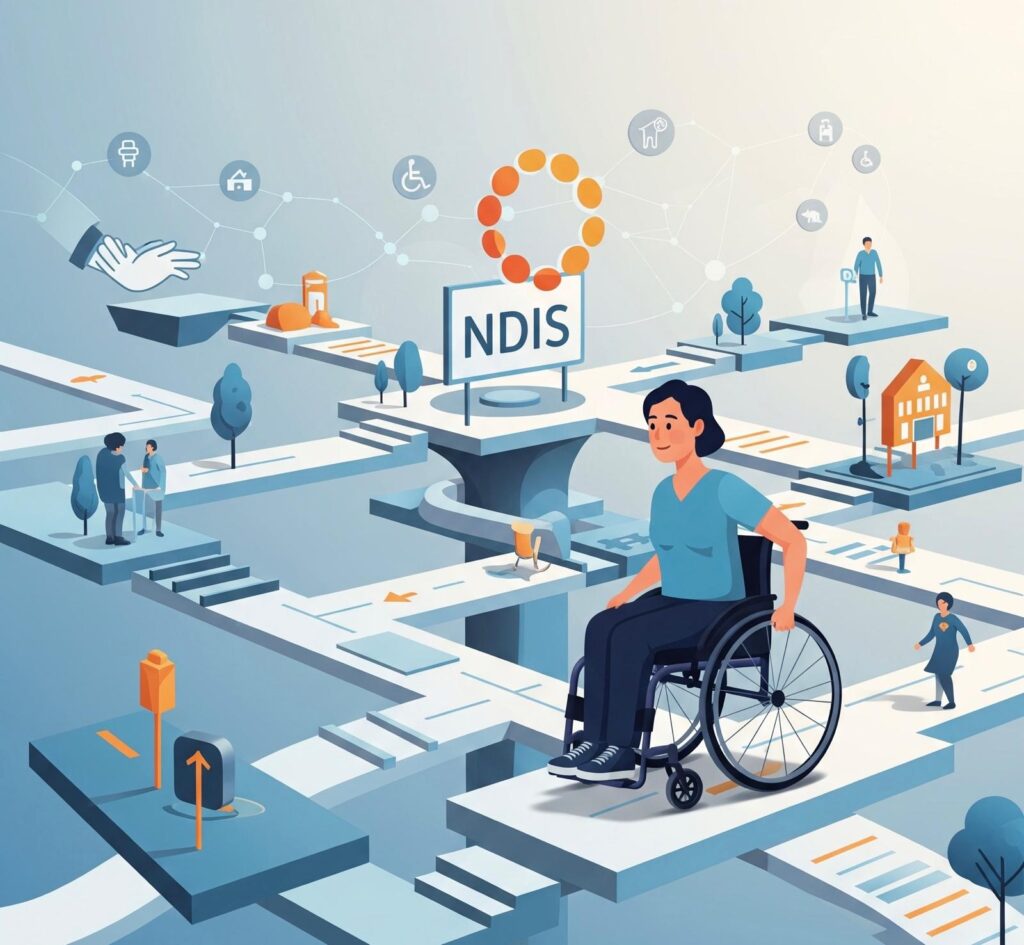CHEAPEST NO WAITLIST NDIS APPROVED PSYCHOLOGY SERVICE – Therapy Near Me
Our practice is a Registered NDIS Provider specialising in providing affordable and comprehensive NDIS psychology services:
- Private clients (non-NDIS funded) can get sessions as cheap as $75 p/s when not on a Mental Healthcare Plan. Clinic locations available in all major CBDs.
- We are a Registered NDIS Psychology Service Provider and we take on all NDIS participants, including NDIA managed.
- Our NDIS session rate is around 25% less than the recommended NDIS billing rate for psychology ($165 vs $214.41 p/s). Leaving participants with more funding for additional services.
- We treat all age groups and presentations.
- Our 24/7 Telehealth service is available to everyone, anywhere in Australia, no matter how remote or what time of day it is.
- We provide a home visit service for all metropolitan areas in capital cities around Australia, for the convenience of our NDIS participants.
Our experienced psychologists have guaranteed immediate (same week) capacity for new NDIS clients.
Access to timely mental health care is crucial for individuals seeking support and treatment. Long waitlists for psychological services can be a significant barrier, exacerbating mental health issues and delaying recovery. The concept of no waitlist psychology aims to eliminate these barriers, providing immediate access to psychological care. This article explores the importance of no waitlist psychology, the benefits, challenges, and strategies to implement it effectively.
Keywords: no waitlist psychology, mental health care, psychological services, immediate access, mental health support, Australian psychology
The Importance of No Waitlist Psychology
Mental health issues are prevalent worldwide, with many individuals requiring psychological support at some point in their lives. In Australia, one in five people experience a mental health disorder each year (Australian Bureau of Statistics, 2020). Timely access to mental health services is essential for effective treatment and recovery. Long waitlists can lead to worsening symptoms, increased distress, and a higher risk of crises.
1. Early Intervention
Early intervention is critical for preventing the escalation of mental health issues. Immediate access to psychological care can significantly improve outcomes.
- Improved Prognosis: Early intervention can reduce the severity and duration of mental health issues (Jorm, 2012).
- Preventative Care: Addressing mental health problems early can prevent the development of more severe conditions (McGorry et al., 2007).
2. Reduced Distress
Long wait times for psychological services can exacerbate distress and anxiety. No waitlist psychology ensures that individuals receive the support they need when they need it.
- Reduced Anxiety: Immediate access to care can alleviate the anxiety and uncertainty associated with waiting for treatment (McGorry et al., 2007).
- Crisis Prevention: Timely intervention can prevent mental health crises and reduce the need for emergency services (Hickie et al., 2011).
3. Improved Engagement
Immediate access to psychological services can enhance engagement and adherence to treatment.
- Better Outcomes: Individuals are more likely to engage in treatment and follow through with therapy when they receive timely support (Kazdin, 2008).
- Continuity of Care: Continuous and consistent care leads to better therapeutic relationships and improved outcomes (Kessler et al., 2001).
Benefits of No Waitlist Psychology
Implementing no waitlist psychology offers numerous benefits for individuals and the broader healthcare system.
1. Enhanced Accessibility
Removing waitlists improves accessibility to mental health services for everyone, including those in remote or underserved areas.
- Telehealth Services: Utilising telehealth can bridge the gap for individuals in remote locations, providing immediate access to care (Yellowlees et al., 2011).
- Equitable Access: Ensuring no waitlists promotes equity in mental health care, making services available to all who need them (Patel et al., 2010).
2. Cost-Effectiveness
Immediate access to mental health services can reduce long-term costs for the healthcare system by preventing the escalation of mental health issues.
- Reduced Hospitalisations: Early intervention and continuous care can prevent hospitalisations and reduce healthcare costs (Andrews et al., 2004).
- Improved Productivity: Effective mental health care can enhance productivity and reduce absenteeism in the workforce (Smith & Smith, 2010).
3. Better Patient Outcomes
No waitlist psychology leads to better patient outcomes by providing timely and consistent care.
- Symptom Reduction: Timely intervention can significantly reduce symptoms of mental health disorders (Kazdin, 2008).
- Enhanced Quality of Life: Improved mental health leads to a better quality of life and overall wellbeing (Patel et al., 2010).
Challenges of Implementing No Waitlist Psychology
Despite its benefits, implementing no waitlist psychology presents several challenges.
1. Resource Allocation
Ensuring immediate access to psychological services requires adequate resources, including funding, staffing, and infrastructure.
- Funding: Sufficient funding is necessary to support no waitlist initiatives and ensure sustainability (Hickie et al., 2011).
- Workforce: Recruiting and retaining qualified mental health professionals is essential to meet the demand for services (Hoge et al., 2013).
2. Managing Demand
High demand for psychological services can make it challenging to maintain no waitlists.
- Capacity Building: Increasing the capacity of mental health services through training and support can help meet demand (Hoge et al., 2013).
- Efficient Systems: Implementing efficient systems and processes can help manage demand and ensure timely access to care (Kazdin, 2008).
3. Ensuring Quality
Maintaining the quality of care while eliminating waitlists is crucial.
- Standardised Care: Developing and adhering to standardised care protocols can ensure consistent and high-quality treatment (Hoge et al., 2013).
- Continuous Improvement: Regularly evaluating and improving services can help maintain quality and effectiveness (Kazdin, 2008).
Strategies for Implementing No Waitlist Psychology
Several strategies can be employed to implement no waitlist psychology effectively.
1. Expanding Telehealth Services
Telehealth can significantly improve access to psychological services, particularly in remote and underserved areas.
- Virtual Consultations: Offering virtual consultations can reduce wait times and increase accessibility (Yellowlees et al., 2011).
- Digital Tools: Utilising digital tools and platforms can enhance the efficiency and reach of mental health services (Bennett et al., 2020).
2. Integrating Services
Integrating mental health services into primary care can improve access and reduce wait times.
- Collaborative Care Models: Collaborative care models that integrate mental health professionals into primary care settings can enhance access and continuity of care (Wagner et al., 1996).
- Cross-Training: Training primary care providers to deliver basic mental health interventions can expand the capacity of the healthcare system (Hoge et al., 2013).
3. Increasing Workforce Capacity
Investing in the mental health workforce is crucial to meet the demand for services.
- Training Programs: Developing training programs for mental health professionals can increase workforce capacity (Hoge et al., 2013).
- Retention Strategies: Implementing strategies to retain mental health professionals can ensure a stable and experienced workforce (Smith & Smith, 2010).
Conclusion
No waitlist psychology is an essential approach to improving access to mental health care. By eliminating waitlists and providing immediate access to psychological services, individuals can receive timely support, leading to better outcomes and improved quality of life. While there are challenges to implementing this approach, strategic investments in telehealth, service integration, and workforce capacity can make no waitlist psychology a reality. Ensuring timely access to mental health care is crucial for the wellbeing of individuals and the broader community.
References
- Andrews, G., Issakidis, C., Sanderson, K., Corry, J., & Lapsley, H. (2004). Utilising survey data to inform public policy: Comparison of the cost-effectiveness of treatment of ten mental disorders. British Journal of Psychiatry, 184(6), 526-533.
- Australian Bureau of Statistics. (2020). National Study of Mental Health and Wellbeing. Retrieved from https://www.abs.gov.au/statistics/health/mental-health/national-study-mental-health-and-wellbeing/latest-release
- Bennett, S., Mathews, M., Karwig, G., Valev, H., & Bennetts, H. (2020). The potential of digital mental health care in Australia. Australian & New Zealand Journal of Psychiatry, 54(1), 1-3.
- Hickie, I. B., McGorry, P. D., Davenport, T. A., Luscombe, G. M., Burns, J. M., & Hickie, M. L. (2011). Getting mental health reform back on track: A leadership challenge for the new Australian government. Medical Journal of Australia, 195(2), 112-114.
- Hoge, M. A., Stuart, G. W., Morris, J., Flaherty, M. T., Paris, M., & Goplerud, E. (2013). Mental health and addiction workforce development: Federal leadership is needed to address the growing crisis. Health Affairs, 32(11), 2005-2012.
- Jorm, A. F. (2012). Mental health literacy: Empowering the community to take action for better mental health. American Psychologist, 67(3), 231-243.
- Kazdin, A. E. (2008). Evidence-based treatment and practice: New opportunities to bridge clinical research and practice, enhance the knowledge base, and improve patient care. American Psychologist, 63(3), 146-159.
- Kessler, R. C., Berglund, P., Demler, O., Jin, R., Merikangas, K. R., & Walters, E. E. (2005). Lifetime prevalence and age-of-onset distributions of DSM-IV disorders in the National Comorbidity Survey Replication. Archives of General Psychiatry, 62(6), 593-602.
- McGorry, P. D., Purcell, R., Goldstone, S., & Amminger, G. P. (2011). Age of onset and timing of treatment for mental and substance use disorders: Implications for preventive intervention strategies and models of care. Current Opinion in Psychiatry, 24(4), 301-306.
How to get in touch
If you or your NDIS participant need immediate mental healthcare assistance, feel free to get in contact with us on 1800 NEAR ME – admin@therapynearme.com.au.







